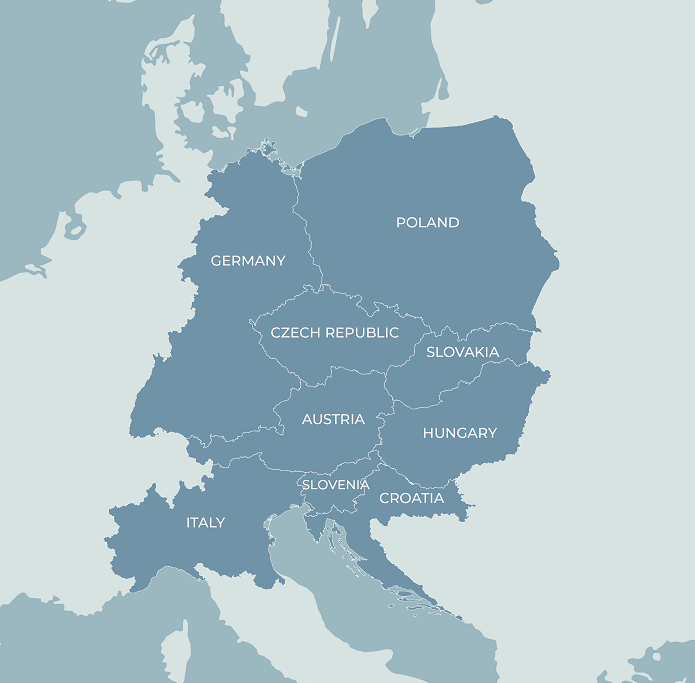PROGRAMME AREA AND CHALLENGES
The Interreg CENTRAL EUROPE programme area covers regions and cities from nine EU Member States: Austria, Croatia, Czech Republic, Germany, Hungary, Italy, Poland, Slovakia and Slovenia. In the new programme, the area was enlarged by Braunschweig in Germany. Find a list of all participating regions here.
With an area of more than one million square km, the programme affects the lives of 148 million people, which share a common history and cultural identity. The territory is characterised by structural differences between regions with growing urban and industrialised areas and rural or peripheral areas often characterised by lower competitiveness and shrinking populations.
The programme territory runs along large parts of the former Iron Curtain covering regions with significant differences in their socioeconomic history. The area is an important cross-junction for European connections beyond its own borders. As a consequence, many trade and transport routes cross the area on transnational rivers, streets and railroads. This makes central Europe a hub for socio-economically relevant corridors.
List of regions
